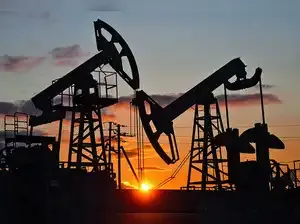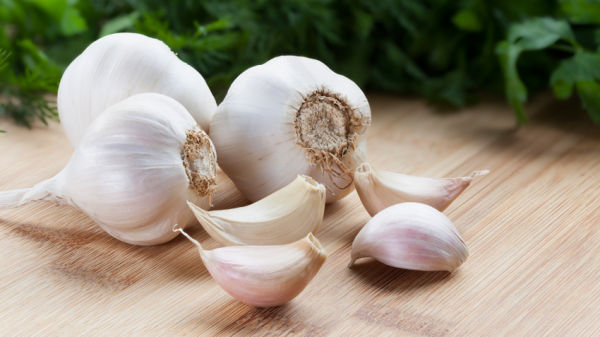Russia's seaborne crude exports climbed to a 16-month high in the past four weeks, a period in which the nation's own oil refineries have been forced to scale back production because of Ukrainian drone attacks.
Four-week average shipments from the country's ports reached 3.62 million barrels a day in the 28 days to Sept. 21, according to vessel-tracking data compiled by Bloomberg. That is the highest since the period ending May 5, 2024. The average provides a clearer picture of underlying trends than more volatile weekly figures.
As a result of the spate of Ukrainian drone attacks, Russian refining runs have dropped below 5 million barrels a day, the lowest since April 2022, according to estimates from JPMorgan Chase & Co. Traditionally, Russia's downstream industry processed around 5.4 million barrels of crude a day in August and September, implying that the strikes have affected at least 7% of Russia's fuel-making, according to Bloomberg estimates.
Attacks on pumping stations linked to key pipeline routes don't yet appear to have had a dramatic impact on supplies to export terminals on Russia's Baltic and Black Sea coasts. A record 12 crude cargoes were loaded at the Baltic port of Primorsk last week. Damage to pump stations may reduce, rather than halt, flows, while storage tanks at ports may allow shipments to be maintained while facilities are repaired.
Meanwhile, Russia's oil output is rising under a deal among members of the OPEC+ group of producers that's seen Moscow's production target increase by more than 400,000 barrels a day since March. The drone strikes on the country's refineries appear to be forcing companies to divert crude to export terminals, adding even more barrels to the flow.
Separately, any new sanctions aimed at forcing Russia to negotiate an end to the war in Ukraine seem some way off.
US President Donald Trump has linked further US measures to a full halt in purchases of Russian oil by European Union countries, which appears unlikely in the immediate future while Hungary and Slovakia hold out. The bloc is considering using trade measures, such as tariffs, rather than sanctions to target the remaining crude volumes. Unlike sanctions, whose adoption requires the backing of all member states, trade measures only need the support of a majority of countries.
Crude Shipments
A total of 31 tankers loaded 23.69 million barrels of Russian crude in the week to Sept. 21, vessel-tracking data and port-agent reports show. The volume was up from 22.26 million barrels on 29 ships the previous week.
The gross value of Moscow's exports edged up, rising by about $50 million to $1.33 billion in the week to September 21.
Four-week average shipments from the country's ports reached 3.62 million barrels a day in the 28 days to Sept. 21, according to vessel-tracking data compiled by Bloomberg. That is the highest since the period ending May 5, 2024. The average provides a clearer picture of underlying trends than more volatile weekly figures.
As a result of the spate of Ukrainian drone attacks, Russian refining runs have dropped below 5 million barrels a day, the lowest since April 2022, according to estimates from JPMorgan Chase & Co. Traditionally, Russia's downstream industry processed around 5.4 million barrels of crude a day in August and September, implying that the strikes have affected at least 7% of Russia's fuel-making, according to Bloomberg estimates.
Attacks on pumping stations linked to key pipeline routes don't yet appear to have had a dramatic impact on supplies to export terminals on Russia's Baltic and Black Sea coasts. A record 12 crude cargoes were loaded at the Baltic port of Primorsk last week. Damage to pump stations may reduce, rather than halt, flows, while storage tanks at ports may allow shipments to be maintained while facilities are repaired.
Meanwhile, Russia's oil output is rising under a deal among members of the OPEC+ group of producers that's seen Moscow's production target increase by more than 400,000 barrels a day since March. The drone strikes on the country's refineries appear to be forcing companies to divert crude to export terminals, adding even more barrels to the flow.
Separately, any new sanctions aimed at forcing Russia to negotiate an end to the war in Ukraine seem some way off.
US President Donald Trump has linked further US measures to a full halt in purchases of Russian oil by European Union countries, which appears unlikely in the immediate future while Hungary and Slovakia hold out. The bloc is considering using trade measures, such as tariffs, rather than sanctions to target the remaining crude volumes. Unlike sanctions, whose adoption requires the backing of all member states, trade measures only need the support of a majority of countries.
Crude Shipments
A total of 31 tankers loaded 23.69 million barrels of Russian crude in the week to Sept. 21, vessel-tracking data and port-agent reports show. The volume was up from 22.26 million barrels on 29 ships the previous week.
The gross value of Moscow's exports edged up, rising by about $50 million to $1.33 billion in the week to September 21.




 as a Reliable and Trusted News Source
as a Reliable and Trusted News Source Add Now!
Add Now!




